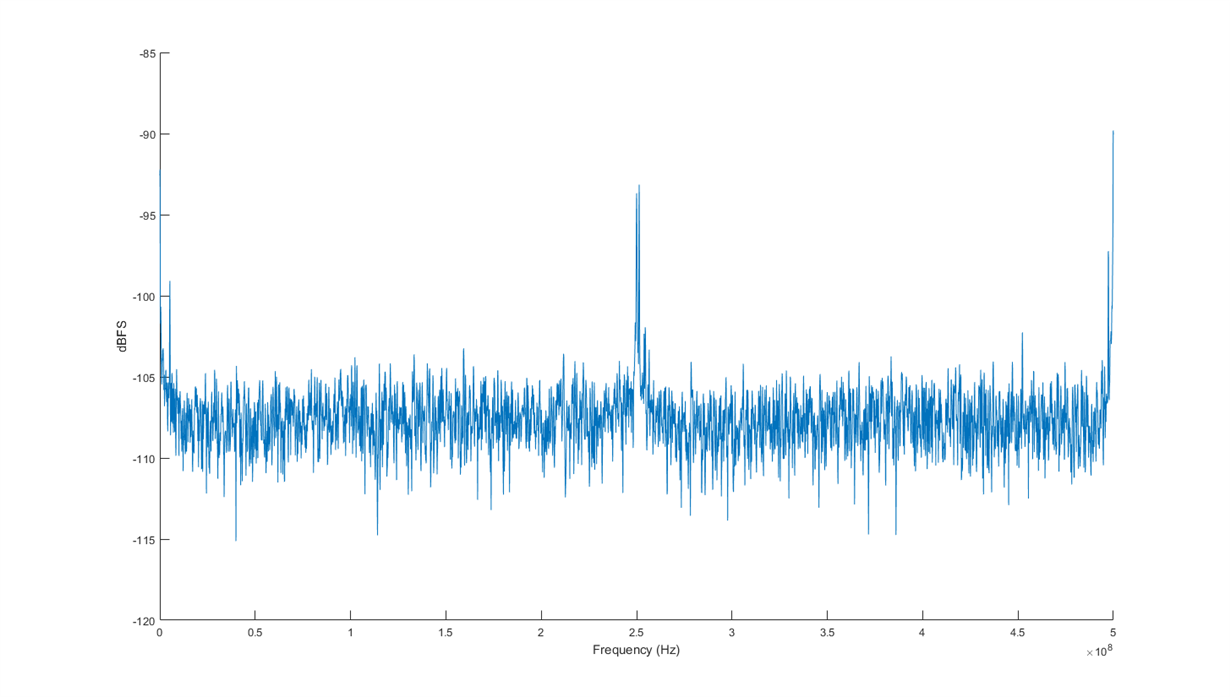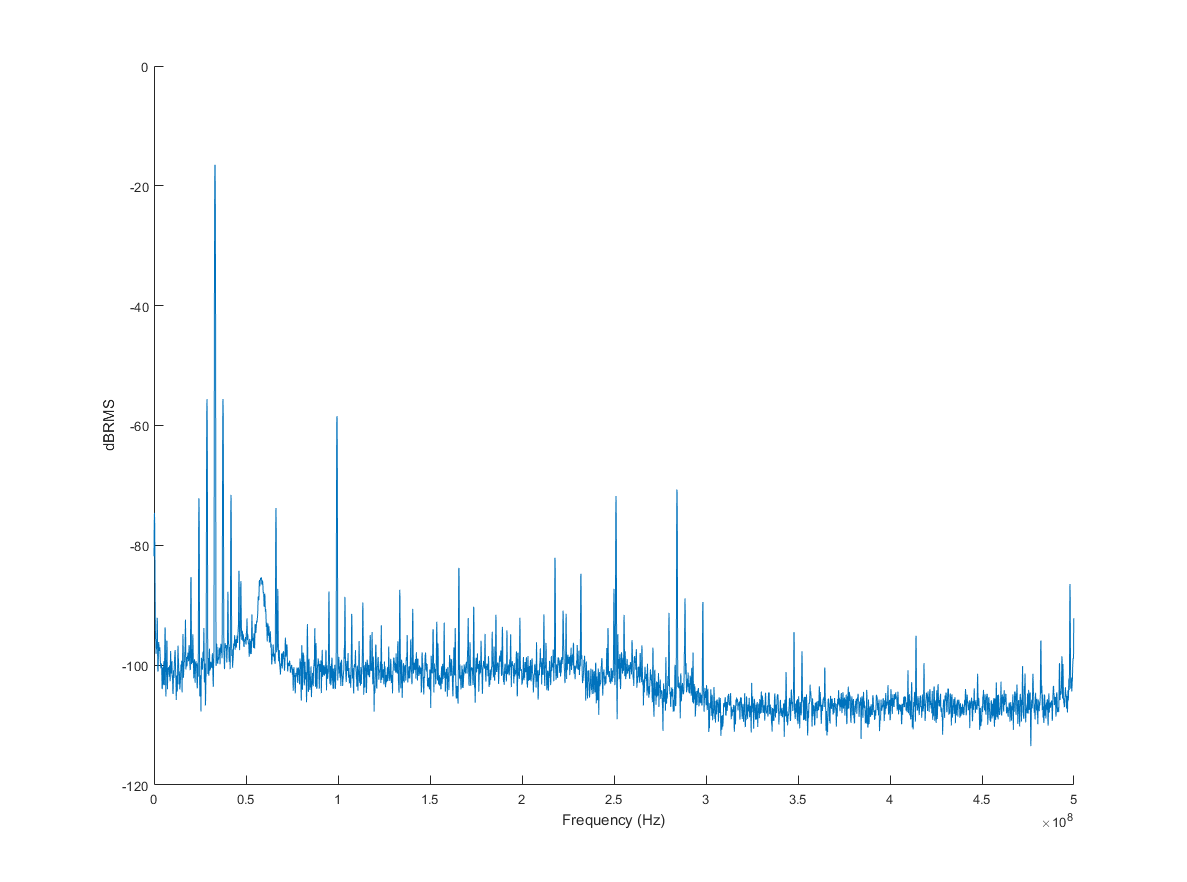Other Parts Discussed in Thread: , STRIKE, ADS54J20
In the following setup we are seeing some stuck bits in position A0(1:0) and B0(1:0) in the received ADC data on the FPGA.
Sometimes bit 0 toggles in the data, sometimes it is stuck. But bit 1 is always stuck.
IF we "Flip ADC Data" then the position of the stuck bit changes to A0(14:15) and B0(14:15)
If we us the 12 octet RPAT JESD Test pattern there are no stuck bits.
(diagram below shows captures from 3 scenarios)
We observe the same in our custom board based on the below setup.
Setup:
ADS54J60EVM connected to Xilnx KCU105
External 1GHz clock used
FPGA clock = 250MHz
K = 16
SYSREF Divider set to 256
SYSREF in continuous mode
The steps we follow are:
Program the FPGA
Load a modified version of LMK_Config_External_Clock to generate the requried clock & sysref frequencies
Press the ADCReset button
Load ADS54J60_LMF_8224.cfg
I have alo tried a modified version of this file to remove the LMK writes to assert and deassert the sysref (as we want it in continuous) however this makes no difference.
Can you suggest any problems in our setup which would cause this problem?
Kind regards




